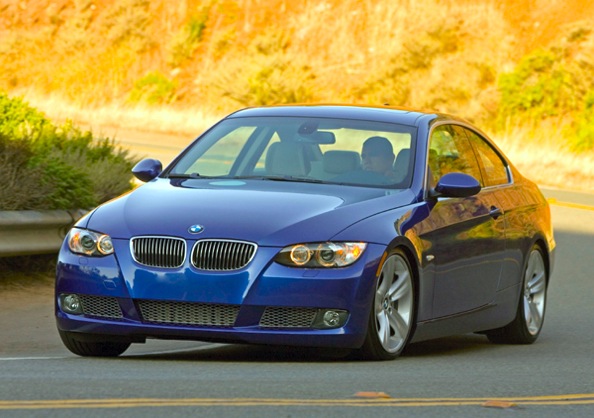2009 Toyota Matrix Performance & Efficiency Standard Features
- 1,798 cc 1.8 liters in-line 4 front engine with 80.2 mm bore, 88.3 mm stroke, 10.0 compression ratio, double overhead cam, variable valve timing/camshaft and four valves per cylinder engine code
- Unleaded fuel 87
- Multi-point injection fuel system
- 13.2 gallon main unleaded fuel tank 11.0
- Power: 98 kW , 132 HP SAE @ 6,000 rpm; 128 ft lb , 174 Nm @ 4,400 rpm
2009 Toyota Matrix Handling, Ride & Braking Standard Features
- Four-wheel ABS
- Brake assist system
- Four disc brakes including two ventilated discs
- Electronic brake distribution
- Immobilizer
- Spacesaver steel rim internal spare wheel
- Strut front suspension independent with stabilizer bar and coil springs, torsion beam rear suspension semi-independent with stabilizer bar and coil springs
2009 Toyota Matrix Exterior & Aerodynamics Standard Features
- Body color front and rear bumpers
- Day time running lights
- Driver and passenger power body color door mirrors
- External dimensions: overall length (inches): 171.9, overall width (inches): 69.5, overall height (inches): 61.0, wheelbase (inches): 102.4, front track (inches): 59.8, rear track (inches): 59.9 and curb to curb turning circle (feet): 36.0
- Complex surface lens halogen bulb headlights
- Luxury trim alloy look on doors and alloy look on dashboard
- Mica paint
- Hinge rear window with defogger
- Tinted glass on cabin
- Weights: curb weight (lbs) 2,965
- Windshield wipers with fixed intermittent wipe
2009 Toyota Matrix Interior Standard Features
- 12v power outlet: front and 2
- Air conditioning
- Roof antenna
- Manufacturer's own audio system with AM/FM and CD player CD player reads MP3
- Cargo area cover/rear parcel shelf
- Cargo area light
- Cargo capacity: rear seat down (cu ft): 61.5 and all seats in place (cu ft): 19.8
- Clock
- Full dashboard console with covered storage box, partial floor console with covered storage box
- Delayed/fade courtesy lights
- Front seats and rear seats cup holders
- Door ajar warning
- Door pockets/bins for driver seat and passenger seat
- External temperature
- Driver front airbag with multi-stage deployment, passenger front airbag with occupant sensors and multi-stage deployment
- Bucket driver seat with height adjustment, bucket passenger seat
- Height adjustable 3-point reel front seat belts on driver seat and passenger seat with pre-tensioners
- Front seat center armrest
- Two height adjustable active head restraints on front seats, three height adjustable head restraints on rear seats
- Internal dimensions: front headroom (inches): 40.5, rear headroom (inches): 39.3, front hip room (inches): 52.3, rear hip room (inches): 43.7, front leg room (inches): 41.6, rear leg room (inches): 36.2, front shoulder room (inches): 53.3, rear shoulder room (inches): 52.6 and interior volume (cu ft): 96.2
- Low tire pressure indicator
- Power steering
- 3-point reel rear seat belts on driver side, passenger side and center side
- Three asymmetrical split bench front facing rear seats with zero adjustments
- Rear view mirror
- Remote fuel filler door release
- Front and rear side curtain airbag
- Front seat back storage
- Cloth seat upholstery with additional cloth
- Seating: five seats
- Service interval indicator
- Front side airbag
- Four speaker(s)
- Plastic steering wheel with tilt adjustment and telescopic adjustment
- Tachometer
- Driver and passenger vanity mirror
- Ventilation system with micro filter
















































